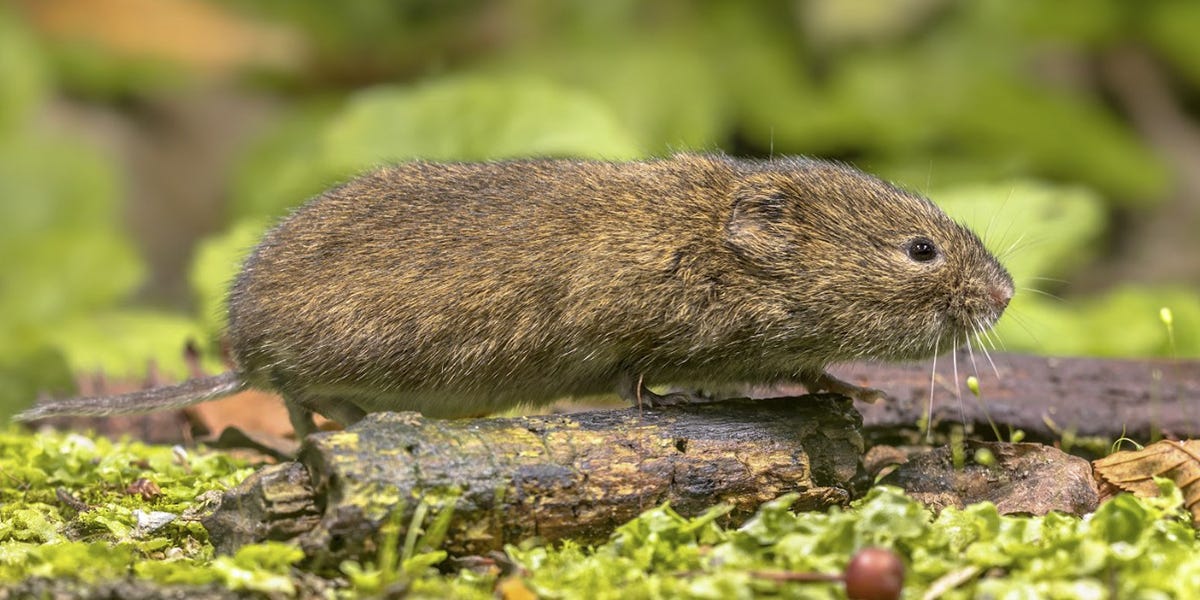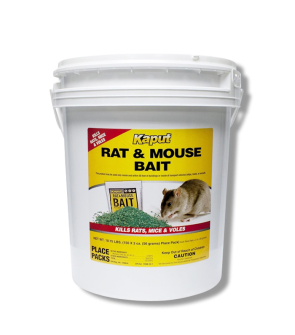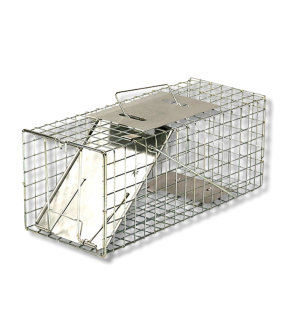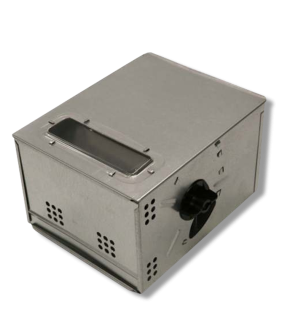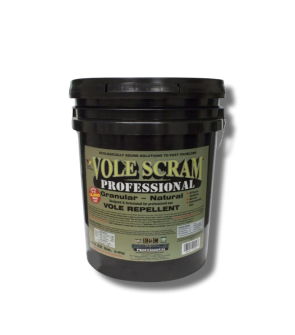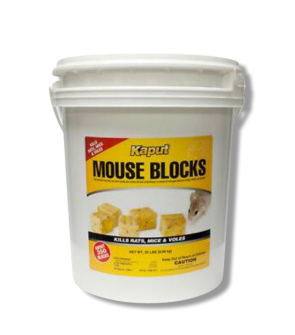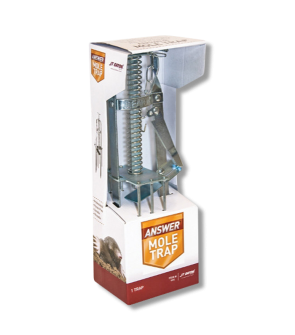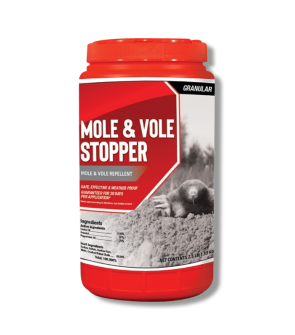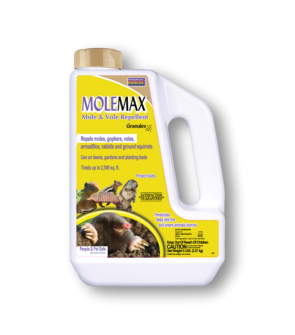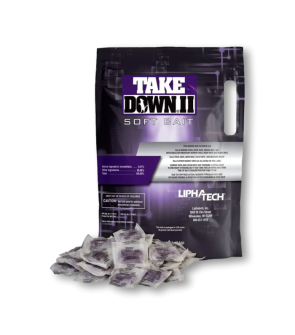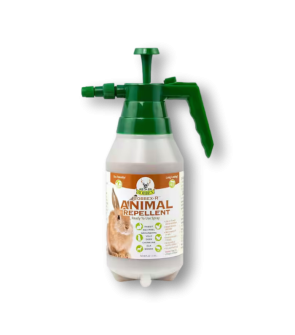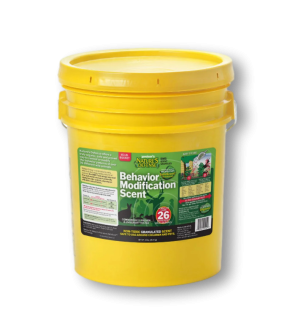Gain access to personalized product screening, the best pricing, rewards, and more!
Most Effective Products
Vole Control: How To Get Rid of Voles
This page is a general vole control guide. Using the products and methods suggested, you will get control of voles. Follow this guide and use the recommended products; we guarantee 100% control over voles. Consult your local and state guidelines to see if voles are a protected species in your location before applying control.
If you own a garden, you may have many concerns besides the elements and weather. Insects that like to feed on your plants can also be a problem, as can voles, which can damage your vegetation.
While voles have a similar-sounding name to moles, they have very little in common other than their dislike for tearing up yards and eating everything in sight. Moles seem better known than voles, but voles can create substantially more damage than the pests they are often confused with.
Voles are incredibly destructive to farms, gardens, and lawns. They can eat and damage plants, crops, vegetables, and flower beds. They can also gnaw the bark of young trees. They destroy root systems in both trees and plants, which in the winter goes unnoticed until the trees are dead.
If you have a vole problem in your yard, our DIY vole treatment guide below will show you how to eliminate it. At Solutions Pest and Lawn, we have all the high-quality products you may need to get rid of voles easily and at an affordable price.
Identification

Before treating, you must properly identify your pest as a vole. Voles are similar to rodents like mice and rats but have unique characteristics that distinguish them from other pests. Below are the characteristics that set Voles apart.
- Voles, also called “meadow mice,” are small mammals, usually 5 to 8 inches long. They have tails, small eyes, and a heavy body.
- They usually have fur that is blackish-brown to greyish-brown.
- To differentiate voles from moles, moles have prominent, large front teeth and black eyes. Voles have small eyes, a shorter tail, and longer fur.
- The best sign of identification is the runway voles created above ground. They compact dense vegetation and connect to their underground burrows. Moles usually spend their time below ground.
- Vole droppings are small and usually green in color.
Use the image and description above to help you identify voles on your property. If you are unsure, contact us; one of our experts will assist you with correct identification.
Inspection

After you have confirmed that voles are the pest you are dealing with, you should inspect the areas where voles are frequenting and most active. This will help determine where you should focus your treatment methods.
Where To Inspect
Voles can be found in a variety of habitats, including meadows, woody areas, lakes, gardens, grassy fields, crops, lawns, and backyards.
Voles, like all living things, need food and shelter to survive. Dense vegetation in overgrown lawns and gardens can provide them with lots of food (they are mainly herbivorous) and shelter since tall grasses are perfect for creating surface runways where they can hide.
Search in your yard and lawn, near gardens, flower beds, crops, vegetables, fields, and where vegetation is dense and the grass is tall.
What To Look For
You're looking for evidence of Vole activity or damage. The most common sign of vole activity is the surface runways they create on grass and turf, which lead to burrow openings.
Voles, like moles, do have a tunnel system, although not as deep. These shallow surface tunnels, or “runways,” have the appearance of trails of dead grass about 1 to 2 inches wide or ditches of bare soil about 1/2 inch deep. They result from voles consuming blades and stems of grass and traveling back and forth over the same path.
Another notable evidence of their activity is their droppings, about 3/16 inches long and green. Once you have confirmed vole activity, it is time to begin treatment.
Treatment
Once you have confirmed vole activity, it is time to begin treatment. Remember to read all product labels, follow the application instructions on these labels, and wear personal protective equipment (PPE) to stay safe.
To get rid of active voles on your property, we recommend using the Solutions Humane Live Trap outdoors. This trap is a great non-lethal method that has successfully caught voles.
Step 1: Remove Food Sources and Bait the Trap

Before setting the trap, you will want to eliminate competing food sources to bait the live trap and lure the vole with the food you place in the trap. Remove any debris from your lawn, such as birdseed. You can also mow your grass short and remove weeds as much as possible so hungry Voles don't have food options and will seek out the bait.
After competing food sources have been cleared, strategically place the trap where you have noticed the vole frequenting. Bait the trap with peanut butter or a fruit paste. This sticky food will ensure that voles cannot take the bait and run away without being caught. The bait should be placed near the back of the trap so the Vole will have to crawl over the trigger plate to reach the food.
Step 2: Set the Trap

You will then set your trap by pushing on the door lock and lifting the door plate. Keep the door plate lifted while pulling the trigger arm forward to set it. You will know it is set when the trigger arm's hook catches the door.
Monitor the set trap frequently, at least twice a day, preferably once in the morning and once in the evening. This is when you will refill bait if necessary.
Once you have captured a vole in your live trap, check with your local authorities to ensure you correctly relocate the animal. Typically, you should travel 5 miles or more from home and then release the animal into the wild or woodsy area. Carefully open the trap and release the animal.
Prevention
After removing invading voles from your property, you must implement preventative measures to ensure they don't return. You need to engage in routine lawn maintenance to make your yard less appealing to voles.
This means removing weeds and heavy underbrush as quickly as possible. The extra plant life in overgrown areas encourages voles to target your lawn, so do what you can to eliminate that excess vegetation.
- Mow your grass regularly to keep it short and well-trimmed to prevent voles from building runways.
- Build fences to protect your trees, crops, gardens, and vegetables. These fences should be 12 inches high and made of fine wire mesh. They should also be dug deep underground, at least 6 to 10 inches, to prevent voles from digging underneath.
- You can also protect trees from vole damage by wrapping them around hardware cloth or metal meshing, ensuring they are far away from the trunk (to prevent voles from pressing against) and deep enough underground to prevent voles from digging underneath.
- Use Mole & Vole Stopper Granular Repellent to create a protective barrier around the vulnerable areas of your property. With its strong smell and terrible taste, this effective granular repellent will scare away voles from the area.
Key Takeaways
What Are Voles?
- Voles are tiny, sturdy rodents with tiny, rounded ears often hidden by thick fur. They have a short tail and small eyes, which makes them very similar to mice. Their fur usually ranges from light brown to gray.
- Voles are known for damaging outdoor spaces by nibbling plants and causing turf damage.
How To Get Rid of Voles In Your Yard
- The best method to eliminate voles is to use a Solutions Humane Live Trap. Clear away competing food sources from your yard, bait the trap, and set it up strategically in an active area where you have seen voles.
- Monitor the trap carefully, and once caught, relocate the vole away from your home.
Preventing Vole Reinfestation
- Complete control is not finished until you modify your environment to make it less suitable for voles. Building fences around gardens, crops, and vegetables will bring lasting results.
- Use Mole & Vole Stopper Granular Repellent repellent to create a protective barrier around your yard to keep voles away from your property.






